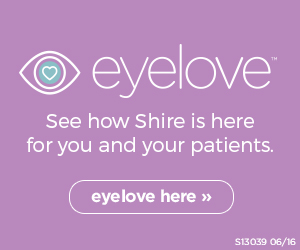
A
weekly e-journal by Art Epstein, OD, FAAO
Off the Cuff: Odds, Ends and Other Things
I want to again thank Dr. Jim Sandefur for his editorial last week and his call to action. For those who didn’t fully understand what Jim was warning us of, let me spell it out: change. A few short years ago, my mobile Internet access was a Blackberry 950 on BellSouth. Today the 950 is a non-functional antique, the network it ran on is long passed its end of life and the provider, BellSouth, was absorbed into Cingular, which in turn was absorbed into what is today AT&T Wireless. The one constant in our lives today is change. Rapid change. If most of what you do today is refraction, your days in practice are numbered. The situation is even worse if you work in a corporate environment, as this segment will rapidly transition to online eyewear sales. That considered, providing online refractive care is far more cost-effective than you are. That leads me to my next musing—a closely related one. Last month, I lauded my old friend and teacher Dr. Andy Buzzelli and the new University of Pikeville, Kentucky College of Optometry for its forward thinking. A number of you misconstrued my meaning when I stated that the problem wasn’t the number of schools. Some assumed I was saying that I am okay with the insane rate of new schools opening. To the contrary, I believe that we are overproducing ODs at an unsustainable rate. Far worse, the quality of some of our programs, both old and new, has fallen to unacceptable levels.I am fine with opening new schools that maintain forward-thinking standards, provide acceptable levels of training and prepare OD students for the future. Only, stop accrediting programs that undertrain students, have inexperienced, mediocre faculty, and graduate students that have little hope of surviving the coming changes in our profession. Do we have too many schools? Right now we certainly do. However, if the schools understand and embrace the changes coming, perhaps we don’t have enough. Finally, many of you know of my visceral distaste for 1-800 Contacts, a company that has gamed the system to always put profits ahead of patient interests. I am a great believer in “what goes around comes around.” 1-800’s holier-than-thou attitude and phony pro-consumer facade was exposed for what it really is by a recent FTC lawsuit lodged against it. The suit paints 1-800 as a bully that attempted to constrain competition at consumer expense by forcing competitors into collusive agreements that thwarted competition. Ultimately, the burden for patient protection rests squarely upon our shoulders. The Contact Lens Consumer Health Protection Act working its way through Congress is critical and will require the support of each and every one of us.
|
|||||

|
||
| Effect of Oral Re-esterified Omega-3 Supplementation on Dry Eye | ||||
This study assessed the effect of oral, re-esterified omega-3 fatty acids on tear osmolarity, matrix metalloproteinase-9 (MMP-9), tear break-up time (TBUT), Ocular Surface Disease Index (OSDI), fluorescein corneal staining, Schirmer score, meibomian gland dysfunction (MGD) stage and the omega-3 index in subjects with dry eyes and confirmed MGD. This was a multicenter, prospective, interventional, placebo-controlled, double-masked study. Subjects were randomized to receive four softgels containing a total of 1,680mg of eicosapentaenoic acid/560mg of docosahexaenoic acid or a control of 3,136mg of linoleic acid, daily for 12 weeks. Subjects were measured at baseline, week six and week 12 for tear osmolarity, TBUT, OSDI, fluorescein corneal staining and Schirmer test with anesthesia. MMP-9 testing and the omega-3 index were done at baseline and at 12 weeks. A total of 105 subjects completed the study. They were randomized to the omega-3 group (n=54) and the control group (n=51). A statistically significant reduction in tear osmolarity was observed in the omega-3 group vs. the control group at week six (-16.8±2.6 vs. -9.0±2.7 mOsm/L) and week 12 (-19.4±2.7 vs. -8.3±2.8 mOsm/L). At 12 weeks, a statistically significant increase in omega-3 index levels and TBUT (3.5 ± 0.5s vs. 1.2 ± 0.5s) was also observed. The omega-3 group experienced a significant reduction in MMP-9 positivity vs. the control group (67.9 percent vs. 35.0 percent), and OSDI scores decreased significantly in the omega-3 group (-17.0±2.6) vs. the control group (-5.0±2.7). Researchers found that the oral consumption of re-esterified omega-3 fatty acids was associated with statistically significant improvement in tear osmolarity, omega-3 index levels, TBUT, MMP-9 and OSDI symptom scores. |
||||
| SOURCE: Epitropoulos AT, Donnenfeld ED, Shah ZA, et al. Effect of oral re-esterified omega-3 nutritional supplementation on dry eyes. Cornea. 2016;35(9):1185-91 | ||||
 |
||
| Variability in Force Requirements to Extract Glaucoma Drops | ||||
This study determined the force requirements to dispense a single drop from commonly prescribed brand-name and generic topical glaucoma medications, and correlated these findings with pinch strength in a representative patient population. Four bottles of each medication were tested: two in the vertical and two in the horizontal orientation. Bottles were housed in a customized force gauge apparatus designed to mimic ballpoint fingertip contact with a bottle tip. For all bottles, each of the first 10 dispensed drops was tested, and then tests were performed in increments of 10 until the bottle was empty. For each tested drop, the maximum force and displacement were electronically measured. Maximum pinch strength was measured concurrently on consecutive glaucoma patients. A total of 84 bottles from 21 bottle designs were tested. Significant variability was determined across the designs, with roughly a seven-fold (0.67kgf to 4.49kgf) and four-fold (0.81kgf to 3.00kgf) difference in force requirements in the vertical and horizontal positions, respectively. Of 53 enrolled patients in the glaucoma clinic, the mean pinch strength was 5.05kgf (range: 1.23kgf to 10.4kgf) and 4.82kgf (range: 1.47 to 10.67 kgf) for the right and left hands, respectively. Researchers concluded that statistically significant variability in the force required to squeeze a drop from common glaucoma medications and a representative sampling of clinic patients suggests that many patients likely struggle with the force requirements of several bottle designs. They added that the data further support standardization of topical glaucoma drug delivery and design. |
||||
SOURCE: Moore DB, Hammer JD, Akhtari R, e al. Squeeze me if you can: Variability in force requirements to extract a drop from common glaucoma bottles. J Glaucoma. 2016; Aug 22. [Epub ahead of print]. |
||||

|
||
| Patterns of Damage in Young, Myopic, Glaucomatous-appearing Patients | ||||
The purpose of the study was to compare patterns of damage in young myopic, glaucomatous-appearing patients with horizontal disc tilt (HDT) with a control group of patients with vertical disc tilt (VDT). Investigators consecutively enrolled 104 eyes of 104 young, myopic, glaucomatous-appearing patients without or with early visual field (VF) defects. The eyes were divided into those with HDT or VDT. The clinical characteristics of the peripapillary retinal nerve fiber layer (pRNFL) and VF damage were compared between groups after matching for age, refractive error and neural rim area, using spectral-domain optical coherence tomography and standard automated perimetry 24-2 VF testing. Multivariate logistic regression analysis was performed to determine the risk factors associated with more advanced VF damage (mean deviation <-6 dB) at initial presentation. The asymmetric loss of pRNFL thickness between hemispheres was significantly greater in the HDT group. Myopic eyes with HDT were more likely to have peripheral VF loss than those with VDT. HDT was an independent risk factor for more advanced VF loss at initial presentation. Investigators suggested that the disc tilt direction may be related to asymmetrical pRNFL loss, and the location and gravity of VF loss at initial presentation in young, myopic, glaucomatous-appearing patients. They wrote that the findings are clinically important for initial detection and planning a follow-up strategy in myopic, glaucomatous-appearing eyes with different disc tilt directions. |
||||
SOURCE: Lee JE, Lee J, Lee JY, Kook MS. Patterns of damage in young myopic glaucomatous-appearing patients with different optic disc tilt direction. J Glaucoma. 2016; Aug 22. [Epub ahead of print]. |
||||
 |
||
| News & Notes | |||||||||||||||
Shire & Jennifer Aniston Help Raise Awareness About Chronic Dry Eye
|
|||||||||||||||
| AOF Announces 2016 Residency Award Recipients The American Optometric Foundation announced the recipients of the 2016 Johnson & Johnson Vision Care Residency Awards, designed to support post-graduate, advanced training in optometric clinical care, education and research specific to the fields of children’s vision and contact lenses. The residents, carefully chosen by peer review members from the American Academy of Optometry Cornea, Contact Lenses and Refractive Technologies Section and the Binocular Vision, Perception and Pediatric Optometry Section each receives $2,000 toward their graduate education and a $750 travel fellowship to attend Academy 2016 (Nov. 9-12). The AOF will recognize the winners at Academy 2016 Anaheim during the AOF Celebration Luncheon on Nov. 12. View the winners. |
|||||||||||||||
| Eyefficient Launches MediWorks Equipment Line; Adds Service Capability Eyefficient is partnering with MediWorks to introduce its line of ophthalmic equipment— including new digital slit-lamp imaging and LED vision chart systems—in the United States. Eyefficient will be demonstrating this and other equipment at Vision Expo West and the American Academy of Ophthalmology. In addition, Eyefficient is partnering with a national engineering firm to provide equipment installation and service via local technicians anywhere in the contiguous United States. With this new partnership, Eyefficient will be able to provide warranty service in less than 24 hours. Read more. |
|||||||||||||||
|
|||||||||||||||
| Lacrivera Receives Canadian Approval for Veraplug Punctal Occluder Lacrivera, a division of Stephens Instruments, received Canadian approval for the VeraPlug Punctal Occluder, designed to provide a simple and effective treatment for chronic dry eye. The device conforms to the puncta for high retention and features a low-profile dome for enhanced patient comfort. The proprietary shaft design enables easy insertion and proper anatomic fit. Available in four sizes—small, medium, large and extra-large—the VeraPlug is available in sterile and non-sterile bulk. Read more. |
|||||||||||||||
| Author Mark Murphy to Give Keynote at IDOC 2016 National Business Conference IDOC, a privately held alliance of independent optometrists in the United States, announced that leadership expert Mark Murphy will serve as keynote speaker at the fall 2016 National Business Conference (Oct. 26 to 29) in Scottsdale, Ariz. Murphy is a New York Times bestselling author, contributor to Forbes and LinkedIn, and founder of Leadership IQ, a research and training firm. His most recent book is “Hundred Percenters: Challenge Your Employees To Give Their All And They’ll Give You Even More.” Murphy will present “Why Don’t I have the Time to Achieve My Goals?”—a theme designed to inspire independent optometrists to build their practices. The conference will also feature roundtable discussions, coaching sessions, GPNs The EDGE User Workshop and more. Read more. |
|||||||||||||||
| Auven Completes Enrollment in Phase II Seciera Trial Auven Therapeutics completed patient enrollment in the Phase III confirmatory study of Seciera (OTX-101), a novel, patented, nanomicellar formulation of cyclosporine for the treatment of dry eye disease. The multicenter, randomized, double-blind, placebo-controlled, two-arm, Phase III, confirmatory trial enrolled 747 individuals with confirmed dry eye disease at 47 investigational sites in the United States. The trial is designed to confirm the significant, clinically meaningful increase in the signs of dry eye disease demonstrated in the previous Phase IIb/III study. The primary efficacy endpoint is percent of individuals with 10 mm improvement in tear production (as measured by the Schirmer’s test) compared with placebo. Secondary endpoints include significant reduction in signs of ocular surface inflammation, as measured by conjunctival and corneal staining. Read more. |
|||||||||||||||
|
Optometric Physician™ (OP) newsletter is owned and published by Dr. Arthur Epstein. It is distributed by the Review Group, a Division of Jobson Medical Information LLC (JMI), 11 Campus Boulevard, Newtown Square, PA 19073. HOW TO ADVERTISE |





